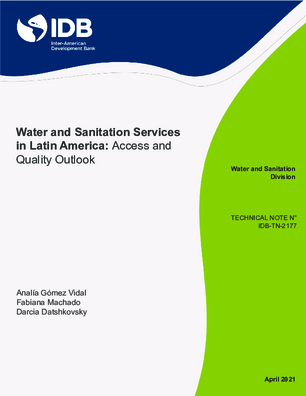Water and Sanitation Services in Latin America: Access and Quality Outlook
Date
Apr 2021
Tracking progress towards the Sustainable Development Goals (SDGs) is critical to evaluate how far the water and sanitation sector is from achieving these targets, and to guarantee that the solutions and strategies implemented get everyone closer to them. But this is not a simple task. To truly assess collective progress towards achieving SDG 6 (and all other goals), it is fundamental to count on standardized measures that help track all types of access, their reliability, and their quality. Existing data tend to lack comparability across sources and locations because they rely on different definitions and categories. Samples are often not representative of all groups within the population. More developed areas are more likely to collect data, which results in the overrepresentation of groups that enjoy better services. Still in some areas and for some categories of information data is not available at all. In response to these challenges, the Inter-American Development Bank (IDB) partnered with the Latin American Public Opinion Project (LAPOP) to gather nationally representative and comparable data in 18 countries in the region. The goal of this effort was to provide an initial outlook of the current landscape of water and sanitation services in the region, using two batteries of questions in the LAPOP questionnaire for the 2018-2019 wave. The main message that arises is that the Latin American and the Caribbean region faces a wide range of challenges, that vary both across and within countries. Some areas face the primary challenge of closing access gaps, while others display higher deficiency in service quality, such as continuity. The gaps in quality of services, in particular, are not clearly perceived by users. In general, levels of satisfaction with the services received is quite high among the population, much higher than warranted by the objective measures of service quality. This raises important issues for accountability in the sector. If users are mostly satisfied with the current state of affairs, it is unlikely they will pressure governments and utilities to improve service delivery. A more in-depth analysis is required to understand the reasons behind these opinions and possible ways to raise awareness.




